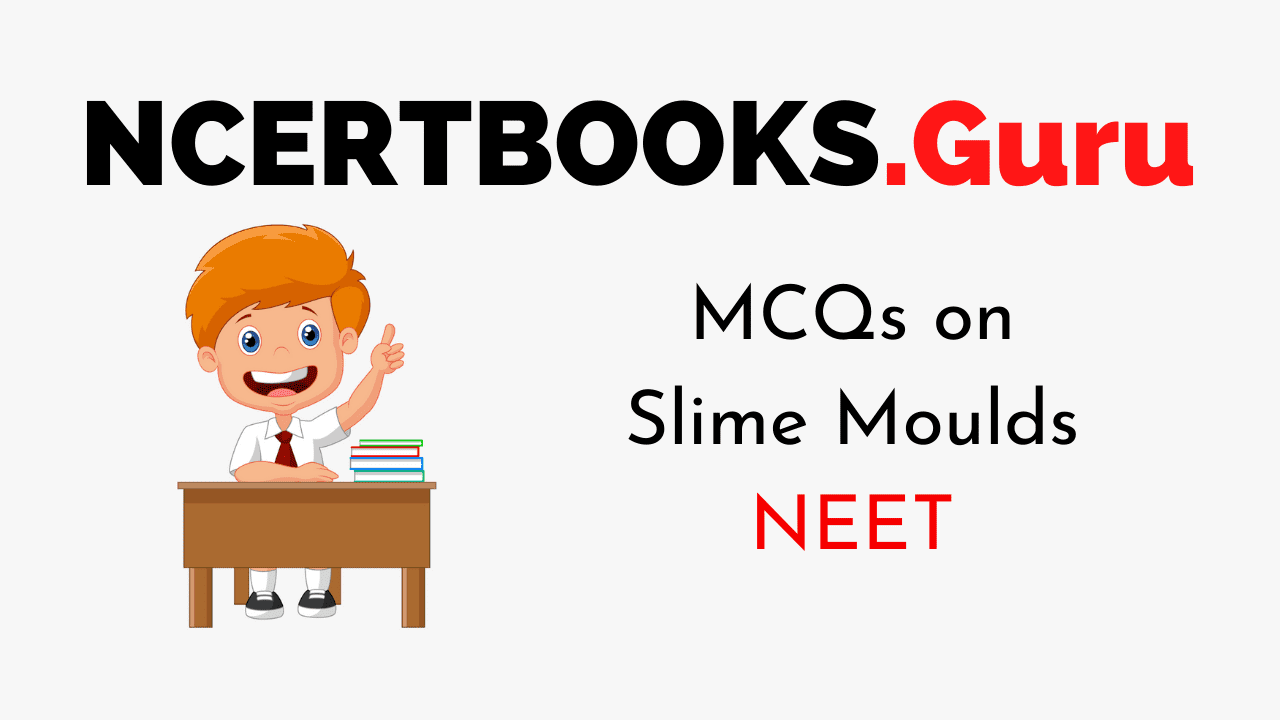NEET Biology is the scoring paper in the medical entrance examination. Here, you will discover the NEET Biology MCQ Questions for all Concepts as per the latest syllabus. Practice more on a regular basis with these NEET Biology objective questions on air pollution and improve your subject knowledge & problem-solving skills along with time management. NEET Biology Slime Moulds Multiple Choice Questions make you feel confident in answering the question in the exam & increases your scores to high.
MCQs on Slime Moulds
1. Slime moulds were included in which of the following kingdom?
(a) Monera
(b) Protista
(c) Fungi
(d) Plantae
Answer
Answer: (b)
2. Which of the following characteristic structure is found in slime mould?
(a) Pseudoelaters
(b) Elaters
(c) Capitulum
(d) Capillitium
Answer
Answer: (d)
3. Where does the spore formation occur in cellular slime mould?
(a) Plasmodium
(b) Sporangium
(c) Sporophore
(d) Pseudoplasmodium
Answer
Answer: (b)
4. Spores of slime moulds develop into
(a) Amoeboid cells
(b) Biflagellated cells
(c) Swarm cells
(d) All of the above
Answer
Answer: (d)
5. Which is the example of slime mould?
(a) Anabaena
(b) Rhizopus
(c) Physarum
(d) Thiobacillus
Answer
Answer: (c)
6. Slime moulds, algae, protozoa are related in having
(a) Eukaryotic cell
(b) Prokaryotic cell
(c) Flagella
(d) Pseudopodia
Answer
Answer: (a)
7. A characteristic feature of a “true slime mould” is
(a) Occurs as an independent cell
(b) A multinucleate plasmodial stage
(c) Secretes mucoidal exudate
(d) None of the above
Answer
Answer: (b)
8. Slug formation is induced by
(a) Over crowding
(b) Plentiful resources
(c) Both (a) and (b)
(d) Unfavourable conditions
Answer
Answer: (d)
9. Slime mould differ from fungi in having
(a) Phagocytosis mode of nutrition
(b) Amoeboid cells
(c) Both (a) and (b)
(d) None of the above
Answer
Answer: (c)
10. Sporangia of slime mould contain
(a) Haploid spores
(b) Diploid zygotes
(c) Gametes
(d) None of the above
Answer
Answer: (a)
